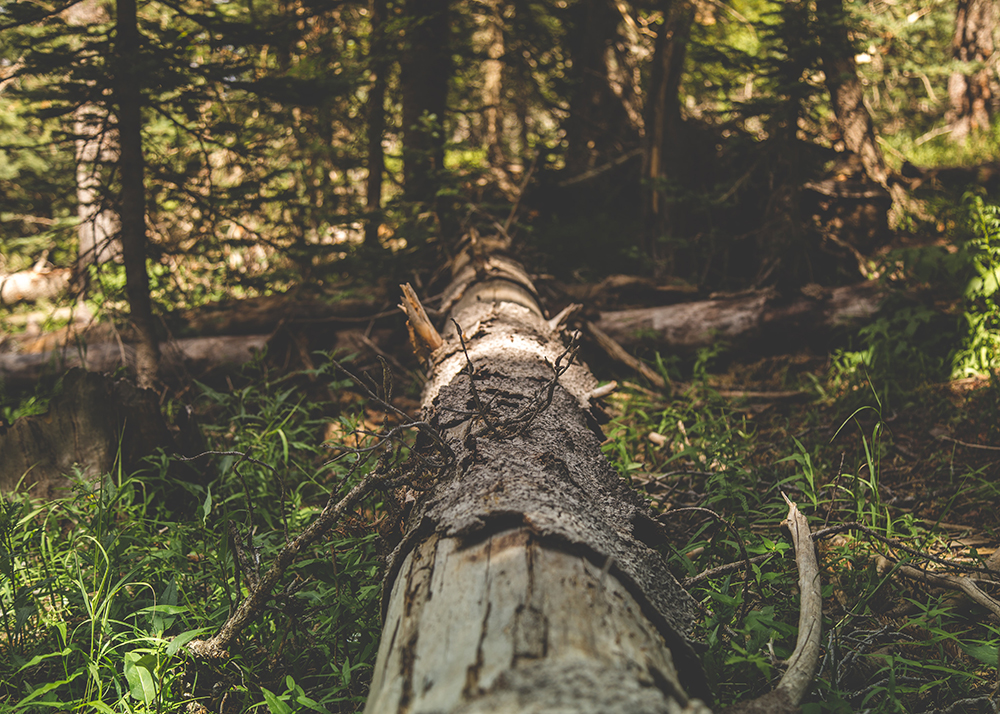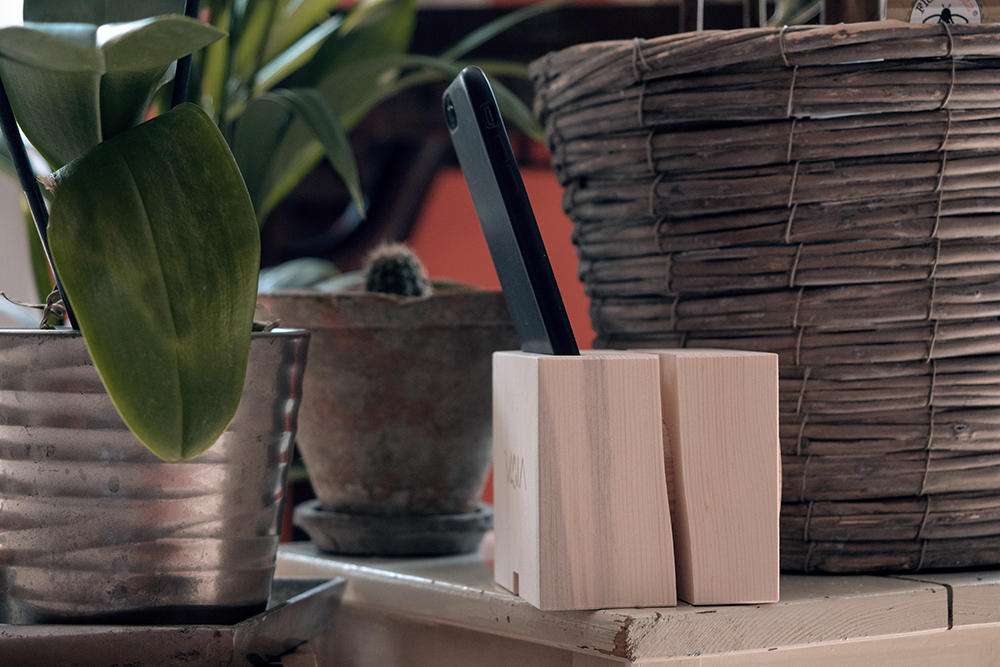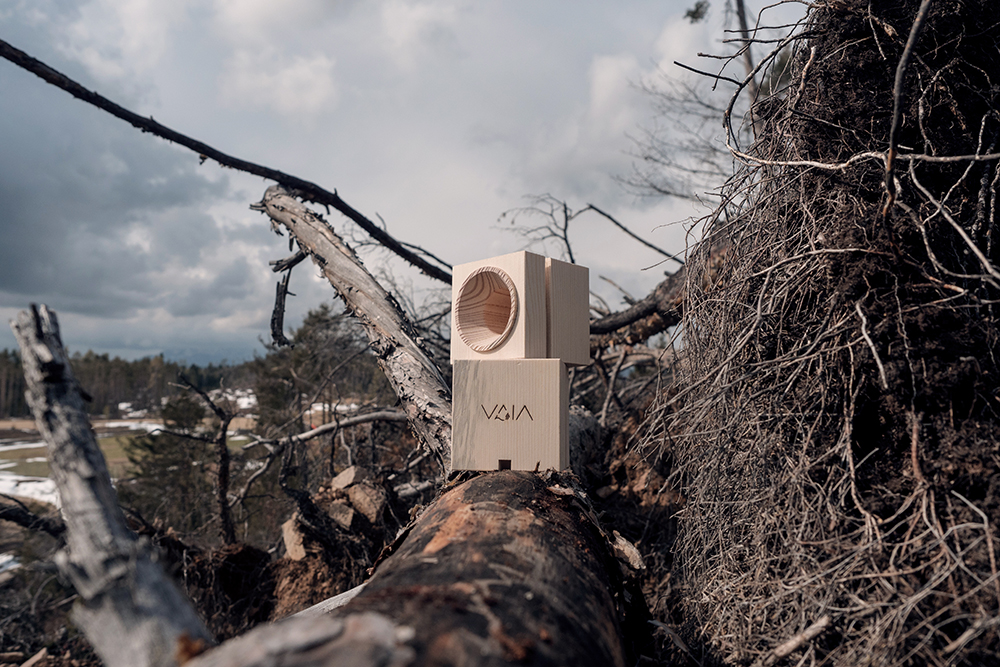The VAIA Cube imperfetto is the full expression of our vision. It embodies a radical approach to the circular process of raw material recovery, which aims at making full use of “waste”. Only in this way can we fulfil the desire that nothing be left behind.
Logs felled by the VAIA storm in the most inaccessible areas are exposed to the elements for prolonged periods, causing blue-green stains to appear in the wood fibre. We have embraced these imperfections because we believe they are an essential part of VAIA’s story, of the way Nature works. The retrieval of logs in such areas is inevitably more difficult: costs rise, further reducing the chances of salvaging timber that is already scarcely sought-after due to its defects. Our initiative supports these efforts and establishes the importance of restoring even the most inaccessible areas. In this way, we are also limiting the environmental risks of bark beetle proliferation.
Natural regeneration continues to be a key objective of ours: with VAIA Cube imperfetto we support Trentino Tree Agreement and the restoration of the famous Violin’s Forest in Paneveggio (TN), in collaboration with the local forestry Corps.
Going from tree to tree
The storm hit large valleys and steep slopes indiscriminately. As of March 2021, 70% of felled trees have been recovered and sold, but the Forestry Service of the Autonomous Province of Trento estimates that about 10% will inevitably be lost, given the inaccessibility of the areas where it is located.
The difficulties in recovery operations are many and affect the wood processing chain. First of all, operators have to face additional costs to cope with the risks of accidents, which are greater when working with the unsafe trees uprooted by VAIA. Secondly, the restoration of damaged infrastructure, such as forest roads and paths, has slowed down the recovery of logs. Finally, the cyclone’s ‘sorting process’ has not been optimal – the fallen trees are smaller than those routinely cut, and the material is not always fully usable due to breaks in the wood fibre caused by the wind.

As Paolo Kovatsch reminded us, restoration operations follow the method of natural regeneration. Storms and fires are an integral part of the forest renewal process, and the wood mass left on the ground provides an important substrate for future flora. However, this ideal course comes up against the threat of the bark beetle, which thrives under the bark of felled trunks. Proliferation of the beetle is expected to increase with the anticipated rise in temperatures, and the exceptional mass of material on the ground encourages incubation of the insect in large populations, which then go on to attack standing trees. The recovery of trunks is therefore essential, now more than ever in areas that are less accessible and therefore more exposed to the risk of infestation.
Reviving the Violin’s Forest
Trentino Tree Agreement is a project conceived by the Autonomous Province of Trento, the Provincial Forestry Agency and MUSE to restore the forests damaged by VAIA.
According to an estimate of October 2020, Trentino Tree Agreement will contribute to an overall intervention on 2,500 hectares, to be carried out in a maximum of ten years and with the planting of 500,000 seedlings!
One of the worst affected areas in Trentino is the Paneveggio State Forest, which has suffered an estimated 60% loss of woodland. What makes it famous, apart from its landscape value, are undoubtedly the distinctive characteristics of its spruces, which have attracted violin makers since the 1600s and earned it the name of Violin’s Forest. The so-called ‘resonance wood‘ is a particular variety of spruce called ‘Picea Excelsa’, which only grows in two other places in Italy – on the nearby Latemar chain and in Tarvisio. The high altitude of the Paneveggio forest, which ranges from 1,550 to 1,850 metres, slows down the growth rate of the plants, which can take up to 50 years to grow by barely 2 metres. The diameter required for lutherie is of 60 centimetres, and selected plants have an average life span of 150-200 years. Their slow growth favours the development of regular and thin rings, which together with the absence of knots and the straight fibre constitute the physical peculiarities of resonance wood.
Each VAIA Cube imperfetto will be accompanied by the planting of a tree in Paneveggio in collaboration with Trentino Tree Agreement, to bring this magical place back to life.
Marrying imperfection
Wood is a living material and must be treated with particular care to preserve its aesthetic and structural characteristics. Once on the ground, the ultimate limit for its use is judged to be two years on average. After that time, the traces left by the weather begin to become evident, and the logs are mostly destined for firewood.
The effects of the weather since the end of October 2018 are beginning to be felt, and despite all the precautions taken to preserve the salvaged wood, such as the creation of irrigated service areas, the problem is becoming more pronounced. We are beginning to find wood attacked by fungi, with a blue-green colouring that leads to it being considered waste material.
The VAIA Cube imperfetto bears witness to our way of looking at Nature: a perfect set of imperfections. We chose to throw nothing away, letting the amplifier be stained by the marks it has accrued during the wood’s exposure to natural agents. After showing the wound of the forest, it is time for the Cube to tell of the imperfection inherent in Nature, calling us to recognise it in ourselves as well. After all, our defects too make us who we are. Accepting them gives us psychological benefits, and projects us into the world with renewed impetus, strong of our history.

The VAIA Cube imperfetto is our ode to imperfection: it gives us back the difficult journey of wood from the steepest slopes to the hands of the craftsman, and represents our desire to give dignity back to each fallen tree, in a true circular economy.
